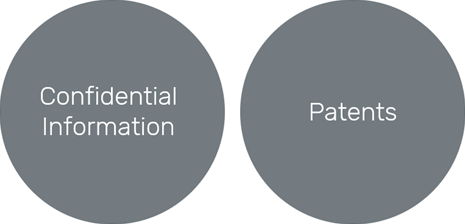What are Trade Secrets?
From a commercial perspective, confidential information can include details of a company’s financial affairs, business operations or customer engagements. A key type of confidential information could be a company’s trade secret, such as a method or technique of manufacture which gives the company an edge over other competitors.
A person who has access to confidential information is generally obliged under the law to keep the information confidential and cannot usually disclose the information to third parties. If he does disclose the information, he is said to have breached the obligations of confidentiality and is liable to legal action.
(a) Protection of Confidential Information
There are no registration processes for confidential information, and neither is there a time limit within which the confidential information is protected.
In considering whether a breach of confidence is made out, the following will be considered:
Whether the information has the quality of confidentiality.
Whether the information was imparted in circumstances importing an obligation of confidentiality. An obligation of confidentiality can be found even where confidential information has been accessed or acquired without the company’s knowledge or consent.
(b) Tips to Safeguard Confidential Information
Limit Access: Ensure that only certain categories of people (e.g. management) have access to confidential information.
Keep Clear Records: Ensure all business transactions which may contain any confidential information are clearly recorded. The information can also be marked "CONFIDENTIAL".
Use Non-Disclosure Agreements (NDAs): These can be used to ensure that a person is contractually required to keep the information confidential. Employees, consultants and vendors should sign NDAs.
(c) Relationship Between Confidential Information and Other Types of IP

Confidential Information which comprises of copyrighted material (e.g. instruction manuals, computer software, databases) will be protected by both the law of confidential information and copyright.
For example, a computer software developer can commercialise his software while still keeping the underlying software architecture, algorithm and source code confidential.

As a general rule, it is not possible to maintain a patent and ensure non-disclosure of confidential information.
This is because, in return for obtaining a 20-year monopoly to exclude others from making, using or selling the invention, the owner of the invention will have to make full disclosure of the invention during the patent application process.
Trade secrets are increasingly important for businesses. In fact, Singapore’s Trade Secrets study completed last year found that trade secrets is the most important type of IP for our businesses.
To help enterprises and innovators to
better protect and manage trade secrets, IPOS has commissioned a Trade Secrets Enterprise Guide, which includes non-exhaustive examples of available trade secret tools and services that enterprises may tap on. This initiative is part of efforts under
the Singapore IP Strategy 2030, which is Singapore’s national roadmap for maintaining a world-class IP regime to support innovative businesses for growth, especially in this era of rapid technological advances.
Case Studies
- Cynopsis Solutions Pte Ltd: This case study highlights how Cynopsis’ robust trade secrets protection helped them to use their trade secrets, together with other intangible assets, to drive business growth and market expansion.
Banking on the Secrets of RegTech
- Nutrition Technologies: This case study illustrates how Nutrition Technologies has effectively protected and managed its trade secrets, including leveraging a trade secrets management platform, to secure its competitive advantage.
Fly with IP: The Secret Sauce in AgriTech
- Rigel Technology (S) Pte Ltd: This case study showcases the importance of safeguarding trade secrets to prevent misappropriation. It also gives an overview of possible measures that can be taken to safeguard non-registrable IP, including trade secrets.
IP in IoT: Protecting the secrets of an “Internet-of-Toilet” system
Celligenics: This case study illustrates the roles of patenting, trademarking and collaborations play in relation to trade secrets protection. It further emphasises how Celligenics’ intellectual property strategy complements the business vision to expand beyond Singapore.
Healing Wounds and Protecting IP
The Singapore IP Strategy 2030 has underscored IPOS’ commitment to maintaining a world-class IA/IP regime and supporting innovative businesses in leveraging their IA/IP for growth. This involves looking into current and emerging business trends.
As a part of these efforts, IPOS undertook a study on trade secrets in Singapore, which sought to gain a deeper understanding of Singapore’s trade secret regime as well as the level of knowledge and ability of enterprises operating in Singapore to protect and manage their trade secrets; and how they might be supported, especially in this era of rapid technological advances.
The findings from this study demonstrate that more may be done to support enterprises in the protection and management of their trade secrets, including raising awareness of the importance of trade secrets and increasing accessibility or trade secret-related services.
On the legal framework front, there is also scope to explore refinements to processes for the preservation of confidentiality of trade secrets during legal proceedings.
You may also like:
Other IP
Manage IP Singapore IP Strategy 2030